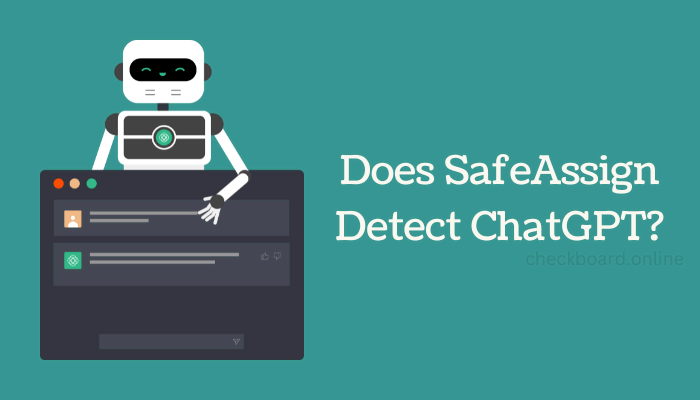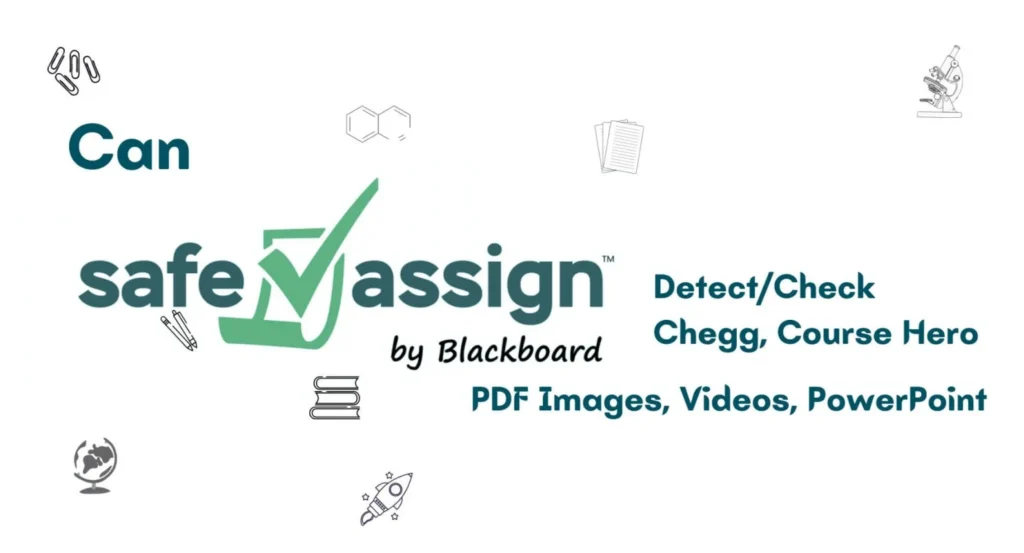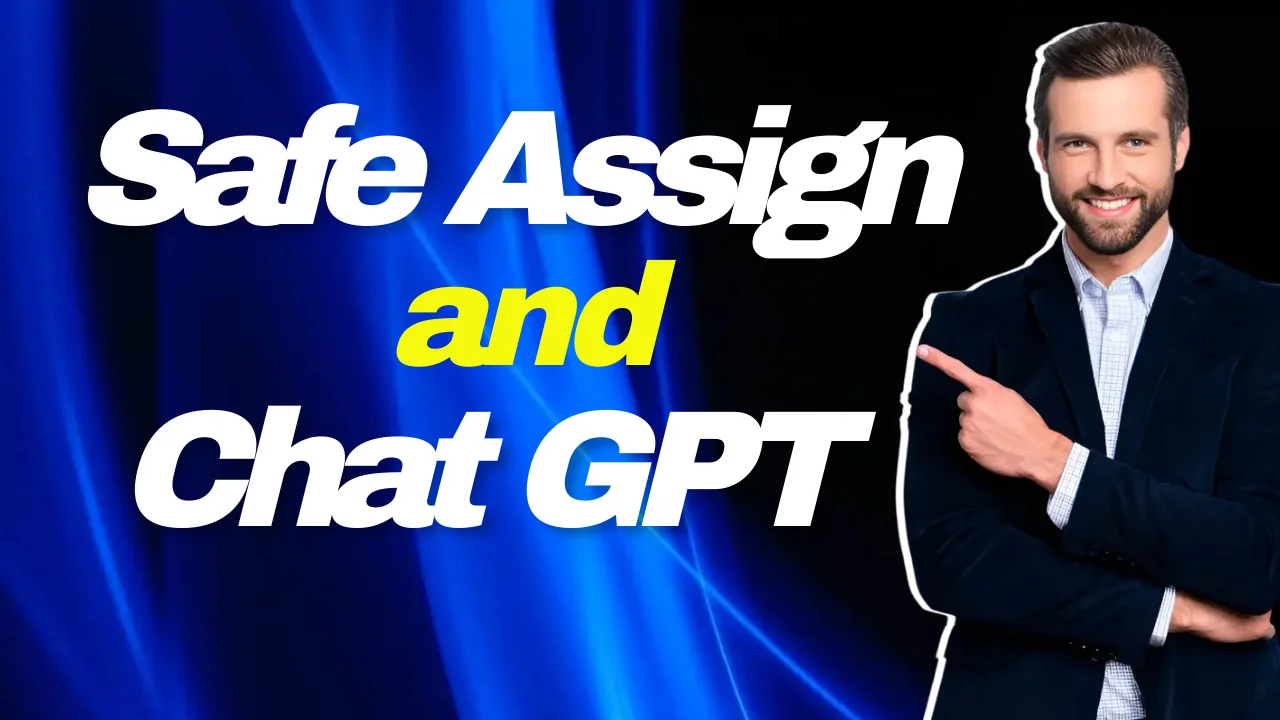In the realm of academic integrity, the emergence of advanced language models has raised concerns about their potential to evade plagiarism detection systems. This article investigates “can SafeAssign detect chat GPT“, using a widely used plagiarism detection Mechanisms.
By exploring SafeAssign’s detection mechanisms and evaluating its effectiveness with ChatGPT-generated content, this study aims to shed light on Does SafeAssign detect ChatGPT.
ChatGPT and SafeAssign: An Overview
ChatGPT and SafeAssign are two distinct technologies that serve different purposes in the realms of text generation and plagiarism detection, respectively.
ChatGPT, developed by OpenAI, is a language model designed to generate human-like text based on given prompts. It utilizes deep learning techniques and large-scale datasets to produce coherent and contextually relevant responses.
On the other hand, SafeAssign is an online plagiarism detection tool commonly used in educational institutions to identify instances of copied content in student submissions. It compares submitted papers against a vast database of academic sources, internet pages, and previously submitted works to check for potential matches or similarities.
Understanding SafeAssign’s Detection Mechanisms

SafeAssign primarily focuses on detecting plagiarism in student submissions rather than specifically targeting chatbot-generated content like ChatGPT.
SafeAssign primarily checks for similarities between the submitted text and existing academic sources, identifying potential matches through textual analysis and comparison algorithms. While SafeAssign can detect instances where students have copied and pasted text from ChatGPT or any other source, it does not specifically search for or target chatbot-generated content itself.
Therefore, while SafeAssign can identify plagiarized material generated by chatbots like ChatGPT if students directly copy it into a submission, it does not actively scan for or flag the utilization of specific chatbot tools like ChatGPT..
Does SafeAssign Detect ChatGPT?

Does SafeAssign detect ChatGPT? It’s a million-dollar question. The focus of SafeAssign’s detection mechanisms lies primarily on identifying instances of plagiarism within student submissions rather than targeting specific sources such as chatbot-generated content.
SafeAssign analyzes the submitted documents and compares them to a vast database of academic papers, articles, and internet sources. It uses advanced algorithms to identify similarities between the submitted work and existing content.
However, it is important to note that while SafeAssign can detect instances where students have copied or paraphrased from known sources, it may not specifically recognize chatbot-generated content as a source of plagiarism. This is because chatbots generate unique responses based on user input and do not necessarily rely on pre-existing materials.
Therefore, instructors should consider additional measures to address potential issues related to chatbot-generated content in student submissions.
The Effectiveness of SafeAssign with ChatGPT Content
SafeAssign is a widely used plagiarism detection tool that compares submitted work against a vast database of academic sources and internet content. However, it may have a limited ability to accurately identify text generated by chatbots like ChatGPT.
ChatGPT utilizes advanced natural language processing algorithms to generate human-like responses, making it difficult for traditional plagiarism detection tools to distinguish between original and machine-generated content.
While SafeAssign can detect verbatim matches or heavily paraphrased text from known sources, it may struggle to identify instances where students use AI-generated responses without proper citation or attribution.
Therefore, additional measures need to be taken to ensure the integrity and authenticity of student submissions involving chatbot-generated content.
The Limitations of SafeAssign

SafeAssign heavily relies on existing databases and pre-existing content for comparison purposes. However, as ChatGPT generates unique text that may not exist in these databases, the tool may struggle to accurately identify such machine-generated content.
Additionally, ChatGPT has the capability to paraphrase or rephrase text while still maintaining the original meaning. This poses another challenge for SafeAssign, as it may struggle to differentiate between original student work and paraphrased or rephrased text generated by ChatGPT.
Product Specs:
- Relies on existing databases
- Compares submitted work against pre-existing content
- Provides similarity reports
Pros:
- Effective in identifying matches with pre-existing content
- Generates similarity reports highlighting potential instances of plagiarism
Cons:
- Struggles to detect machine-generated content
- Difficulty distinguishing between paraphrased or rephrased text and original work
- Relies heavily on existing databases, which may limit accuracy
How SafeAssign Can Improve Detection
One potential approach could involve incorporating advanced machine learning algorithms specifically designed to identify ChatGPT-generated content. These algorithms could be trained on a large dataset of ChatGPT samples, allowing SafeAssign to better detect and flag instances of this type of content.
Another avenue for improvement involves enhancing the database of SafeAssign to include ChatGPT-generated samples. By including these samples in the database, SafeAssign can further train its algorithms and improve its ability to accurately identify ChatGPT content.
Collaboration between SafeAssign developers and OpenAI is also crucial to improving detection capabilities. By working together, both parties can share knowledge and expertise, leading to more effective detection mechanisms that can keep up with advancements in machine-generated content.
Product Specs:
- Integration of advanced machine learning algorithms
- Expansion of the database with ChatGPT-generated samples
- Collaboration with OpenAI
Pros:
- Improved detection accuracy
- Enhanced ability to identify machine-generated content
- Alignment with technological advancements
Cons:
- Requires significant development and research efforts
- Potential challenges in keeping up with evolving machine generation techniques
- May require ongoing collaboration and updates due to changing technologies
Frequently Asked Questions : Safeassign ChatGPT
Can Safeassign Detect Chat GPT in Non-Textual Content Such as Images or Videos?
SafeAssign is a plagiarism detection tool commonly used in educational settings. Its primary function is to compare submitted texts against a database of academic sources to determine possible instances of plagiarism.
Does Safeassign Have the Ability to Identify Paraphrased Content That May Not Be Detected by Other Plagiarism Detection Tools?
SafeAssign’s ability to identify paraphrased content that may elude other plagiarism detection tools is a topic of interest. Further investigation is necessary to determine if SafeAssign can effectively detect such content.
What Measures Can Safeassign Take to Improve Its Detection Capabilities for Chat-Generated Content?
To enhance its ability to detect plagiarism in ChatGPT-generated content, SafeAssign could potentially implement measures such as analyzing language patterns, comparing text with known sources, and incorporating machine learning algorithms for continuous improvement of its detection capabilities.
What is the SafeAssign plagiarism checker, and how does it help detect plagiarism in submitted documents?
SafeAssign is a plagiarism detection tool that scans submitted documents to identify potential instances of plagiarism by comparing the content against a vast database of academic papers, internet sources, and previously submitted work.
Does SafeAssign check Chat GPT-generated content?
Yes, SafeAssign has the capability to check and detect content generated by ChatGPT or any other AI language model, especially if it’s submitted as part of an assignment or document. However, it’s essential to ensure that proper citation and referencing guidelines are followed to avoid plagiarism concerns.
Conclusion
In conclusion, for the question of “Does SafeAssign detect ChatGPT?“, SafeAssign has proven to be effective in detecting plagiarism and maintaining academic integrity. By employing advanced algorithms and detection mechanisms, it can accurately identify content created by ChatGPT or any other AI language model.
However, there are limitations to its effectiveness, as it relies on preexisting databases and may not detect newly generated or modified content. To improve detection capabilities, SafeAssign should continuously update its database and integrate machine learning techniques for more accurate results.
Just as a vigilant guard protects a fortress from intruders, SafeAssign safeguards the academic world from the infiltration of plagiarized content.
